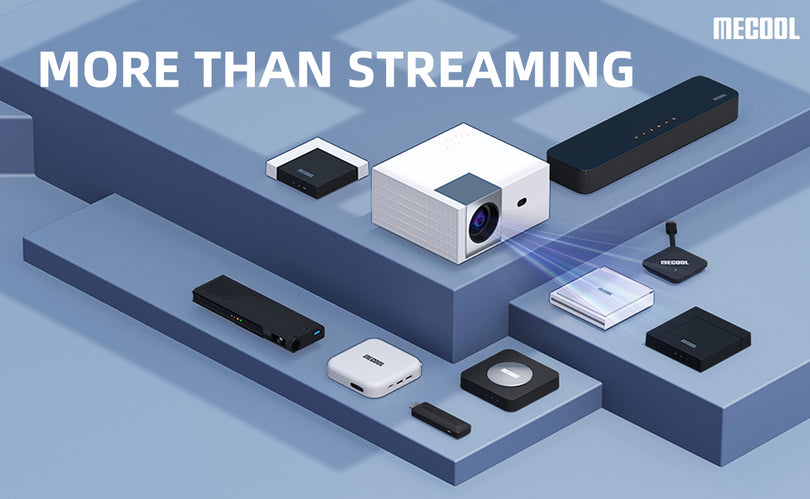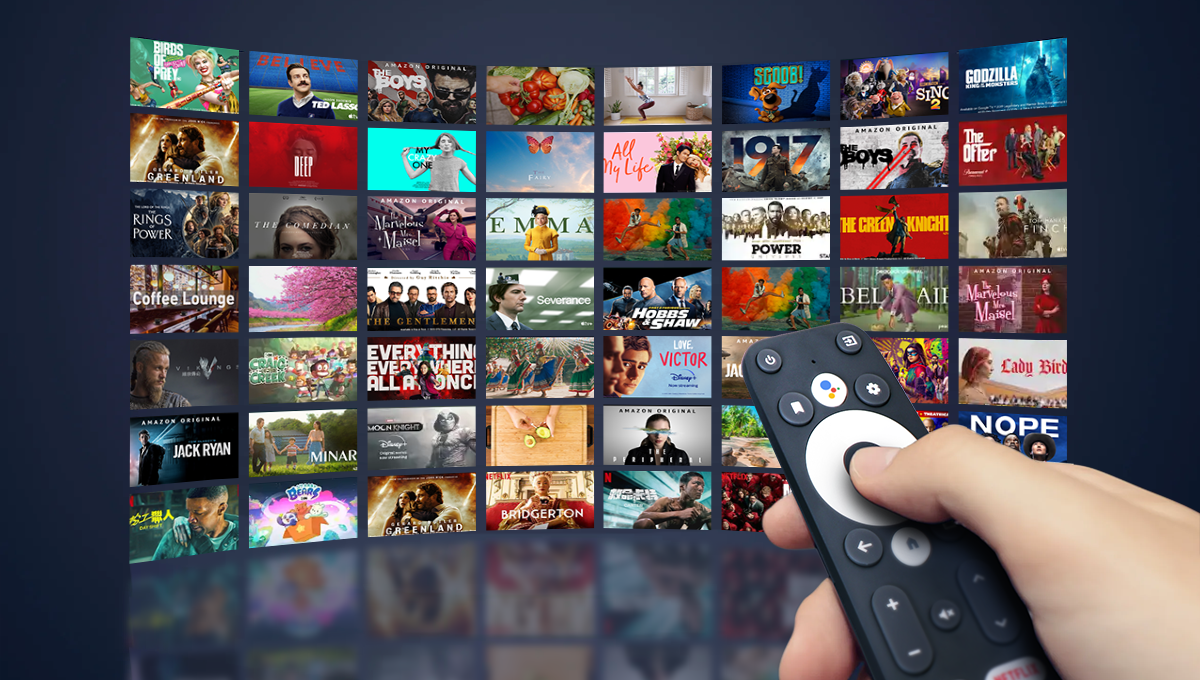Are you in the market for a new home entertainment system but unsure whether a smart home projector or a traditional TV is the right choice? With so many options available, it can be challenging to determine which one will fit your needs and budget.
In this article, we'll take a closer look at the pros and cons of smart home projectors versus traditional TVs and explore topics like image quality, cost-effectiveness, portability, home automation, and technological advancements.
By the end of this piece, you'll have a better understanding of which option is the best fit for your lifestyle, preferences, and home setup. So, let's dive in and discover which one reigns supreme in the battle of smart projectors vs. traditional TVs!
What is a smart home projector?
A smart home projector is a device that projects an image onto a screen or wall using a light source and lens system. Unlike traditional projectors, smart home projectors have built-in features such as Wi-Fi connectivity, app integration, voice control, and smart home compatibility that allow them to connect to other devices and services seamlessly. Smart projectors offer more versatility than traditional projectors since they can function as standalone devices without requiring additional equipment like speakers, media players, or streaming devices.
Image quality
Smart home projectors typically offer better image quality than traditional TVs due to their ability to produce larger, higher-resolution images with greater color accuracy and contrast. However, the quality of the image projected can depend on factors such as ambient lighting, screen size, resolution, and the type of content being displayed. Some smart projectors may also have limited brightness or require a dark room for optimal performance.
Portability and convenience
One of the significant advantages of smart home projectors over traditional TVs is their portability and convenience. Smart projectors are generally smaller, lighter, and easier to transport than a TV, allowing you to take them with you wherever you go. They can be set up in any room of the house or even outdoors, making them perfect for movie nights, gaming sessions, or backyard parties. Smart projectors also offer more placement options since they do not require a flat surface or wall mount like a TV.
Affordability
When it comes to cost-effectiveness, smart home projectors are generally more affordable than traditional TVs with similar specifications, especially for larger screen sizes. While the initial investment may be higher, smart projectors consume less energy than traditional TVs and last longer since they have no internal parts or bulbs that need replacement. Smart projectors also offer more flexibility in terms of what you can connect to them, potentially reducing the need for additional equipment, subscriptions, or services.
The environmental impact
Smart home projectors are environmentally friendly compared to traditional TVs because they consume less energy, produce less heat, and have a more extended lifespan. They also do not emit harmful chemicals like mercury, which is commonly found in some TV screens. Investing in a smart home projector can help reduce your carbon footprint and contribute to a more sustainable future.
How to choose the right smart home projector for your needs
Choosing the right smart home projector can be overwhelming, but there are several factors to consider when making your decision. These include screen size, resolution, brightness, throw distance, connectivity, sound quality, and compatibility with other devices and services. It's essential to determine your budget, purpose, and usage scenario before selecting a smart projector that meets all your requirements.
Best practices for setting up and using your smart home projector
1、Choose the Right Location: When choosing a location to set up your smart home projector, consider factors such as ambient lighting, screen size, distance from the projection surface, and room size. A dark room or low-light environment will provide optimal performance, while a larger room may require a brighter projector or a larger screen.
2、Adjust Focus and Zoom: Once you've found the right location, adjust the focus and zoom settings on your smart home projector to ensure a clear and crisp image. Use the keystone correction feature to correct any distortion caused by projecting the image at an angle.
3、Use a High-Quality Screen or Surface: The quality of the projection surface can significantly affect the image quality of a smart home projector. For best results, use a high-quality projection screen or a smooth, flat, and white wall. Avoid textured or colored walls that can distort the colors and contrast of the projection.
4、Connect to Audio Devices: Most smart home projectors come with built-in speakers, but for a more immersive audio experience, consider connecting external speakers or a soundbar. Ensure that the audio output matches the input source and adjust the volume levels accordingly.
5、Control Ambient Lighting: To get the most out of your smart home projector, control ambient lighting in the room where it's being used. Dimming the lights or using blackout curtains can help create a darker environment that enhances the image quality of the projection.
6、Maintain Proper Ventilation: Smart home projectors generate heat during operation, so ensure that there is proper ventilation around the device. Place it on a stable surface where air can circulate around it freely to prevent overheating.
7、Clean and Maintain Regularly: To maintain optimal performance, clean your smart home projector regularly. Use a soft cloth to wipe off dust and debris and avoid using harsh chemicals or solvents that can damage the lens or other components.
By following these best practices, you can ensure that you are getting the most out of your smart home projector and enjoying a high-quality image and audio experience.
Best Practices for MECOOL KP1 Smart Home Projectors
High-Quality Image and Audio: The MECOOL KP1 Smart Home Projector delivers a high-quality projection with a brightness of up to 700 lumens and a native resolution of 1920x1080P. It also features built-in A 5w speakers that deliver clear and immersive audio. This combination ensures that you get an enjoyable and cinematic viewing experience every time.
Versatility and Convenience: The MECOOL KP1 Smart Home Projector is lightweight, small, and portable, making it perfect for use at home, on vacation, or during outdoor activities. With its wireless connectivity, you can easily connect it to your smartphone, tablet, laptop, or other smart devices, allowing you to access your favorite streaming services, games, and content anywhere and anytime.
Long Lifespan and Low Energy Consumption: Unlike traditional TVs, the MECOOL KP1 Smart Home Projector has no internal parts or bulbs that need replacement, resulting in a more extended lifespan and less maintenance. It also consumes less energy than most traditional TVs, making it an eco-friendly and cost-effective option over the long term.
Say goodbye to mediocre movie nights and hello to the ultimate viewing experience! Learn more about the benefits of smart projectors and traditional TVs and make an informed decision today.
Related sources related to the topic of the article:
1、Techwalla:https://www.techwalla.com/articles/the-pros-and-cons-of-owning-a-smart-projector-over-a-traditional-tv
3、PCMag: https://www.pcmag.com/picks/the-best-home-theater-projectors
4、Lifewire:https://www.lifewire.com/how-to-use-a-projector-in-your-home-theater-1846798
5、Digital Trends:https://www.digitaltrends.com/home-theater/best-smart-projectors/
6、TechRadar:https://www.techradar.com/news/projectors-vs-tvs-which-is-best-for-your-home-theater
7、Medium:https://medium.com/@andrewchen_42803/the-benefits-of-smart-home-automation-cfb3b2c5499e
8、Hometree: https://www.hometree.co.uk/advantages-of-smart-homes/
9、Inverse: https://www.inverse.com/article/40129-smart-home-automation-how-it-can-benefit-your-family
10、The Sustainability Initiative at UC Berkeley:
https://sustainability.berkeley.edu/environmental-impact-electronics




